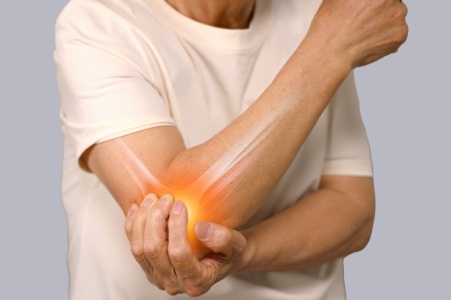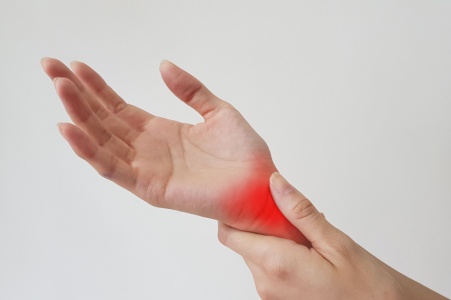Blog

Elbow pain is discomfort or stiffness in the joint that can limit arm movement and daily activities. Causes include overuse from repetitive motions, arthritis that wears down joint cartilage, bursitis from inflammation of fluid-filled sacs, and bone fractures from injury. Symptoms may involve aching, swelling, weakness, or difficulty gripping objects. A chiropractor can help by assessing joint alignment, reducing muscle tension, and using gentle adjustments to improve mobility. They may also recommend targeted exercises and ergonomic advice to prevent recurrence. If elbow pain is interfering with work, sports, or simple tasks, it is suggested that you seek chiropractic care to relieve discomfort, restore function, and support long-term joint health.
Elbow pain can make even simple tasks challenging, often resulting from repetitive movements, strain, or injuries. Conditions like tennis elbow, golfer’s elbow, and nerve entrapment are common culprits, leading to inflammation and discomfort in the tendons or surrounding tissues. Whether caused by sports, work activities, or an accident, persistent elbow pain can hinder mobility and strength.
Symptoms may range from sharp pain and stiffness to numbness or a weakened grip, interfering with daily life. While pain relief methods like rest can help, they may not address the underlying problem.
Chiropractic care focuses on identifying and treating the source of elbow pain. Through gentle adjustments, soft tissue therapies, and targeted exercises, chiropractors relieve tension, improve joint function, and reduce inflammation. This holistic approach helps not only to ease pain but also to prevent future issues, ensuring long-term comfort and mobility.
1. How does spinal alignment affect elbow pain?
Misalignments in the spine can compress nerves that travel to the arm, leading to referred pain or tension in the elbow. Correcting alignment helps relieve this pressure and improve function.
2. How can chiropractic care help prevent recurring elbow injuries?
Chiropractors identify movement patterns or misalignments that contribute to strain and provide strategies to improve mechanics. This reduces the likelihood of reinjury.
If you have any questions please feel free to contact our office located in Largo, FL .

Carpal tunnel syndrome develops when the median nerve, which runs from the forearm into the hand, becomes compressed within the narrow passageway of the wrist. This condition often leads to numbness, tingling, or weakness in the hand and fingers, making daily tasks more difficult. The discomfort may begin gradually, starting with mild sensations in the thumb, index, or middle finger, but can progress into persistent pain or reduced grip strength. Repetitive hand motions and prolonged wrist positioning may contribute to the strain placed on the nerve. Over time, the muscles at the base of the thumb may weaken if the condition is not addressed. A chiropractor can evaluate the alignment of the wrist, elbow, and spine to determine where pressure on the nerve may be occurring and use gentle adjustments to improve mobility and reduce nerve irritation. If you are suffering from symptoms of carpal tunnel syndrome, it is suggested that you make an appointment with a chiropractor for an exam and treatment options.
Carpal Tunnel Syndrome
Carpal tunnel syndrome, or CTS, is a condition caused by compression of the median nerve, which runs through the carpal tunnel in the wrist. This tunnel is a narrow passageway surrounded by bones and ligaments, and when it becomes compressed or inflamed, it can put pressure on the nerve. Symptoms of CTS include tingling, numbness, weakness, and pain in the hand and fingers, often making simple tasks difficult and uncomfortable.
Chiropractic care offers a non-invasive approach to managing CTS by addressing alignment and reducing nerve pressure. Chiropractors start by evaluating the wrist, elbow, and even the cervical spine or neck, as misalignments in these areas can contribute to nerve compression in the wrist. Through gentle adjustments, chiropractors can improve the alignment of the wrist and spine, helping to reduce the pressure on the median nerve.
In addition to adjustments, chiropractors may use soft tissue therapy, such as stretching and myofascial release, to reduce inflammation surrounding the wrist and enhance mobility.
Why Consider Chiropractic for CTS?
Chiropractic care can provide lasting relief by targeting the root causes of CTS, reducing pain, and promoting long-term hand and wrist health.
Can Chiropractic Care Address Repetitive Strain as a Cause of CTS?
Chiropractic care can help manage repetitive strain by improving joint alignment and recommending ergonomic adjustments.
If you have any questions, please feel free to contact our office located in Largo, FL .

Stress is the body’s response to challenges that disrupt homeostasis, the balance needed for optimal health. It can be acute, occurring suddenly, or chronic, persisting over time and leading to fatigue and low energy. Risk factors include demanding jobs, lack of sleep, poor posture, and underlying health issues. Symptoms may involve headaches, muscle tension, irritability, digestive problems, and difficulty concentrating. Chiropractors can help by reducing spinal misalignments that interfere with nervous system function, improving circulation, and promoting relaxation. Restoring balance in the body can lessen the physical toll of stress and support overall well-being. If you are stressed or your energy level is low during the day, it is suggested that you consult a chiropractor who can offer natural solutions to manage these conditions.
Experiencing ongoing stress and low energy can wear down both body and mind, making even routine tasks feel overwhelming. The body’s stress response, designed for short bursts of activity, can exhaust physical and mental reserves when constantly activated, leaving a feeling of fatigue and burnout.
Chiropractic care offers a supportive way to manage these challenges by focusing on the body's alignment and nervous system function. Misalignment in the spine can increase tension, disrupting nerve signals and possibly contributing to feelings of low energy. Gentle adjustments can help relieve this tension, supporting better nervous system communication, which may encourage relaxation and boost energy levels.
Incorporating chiropractic care into a wellness routine can offer a holistic approach to managing stress and low energy, emphasizing balance, relaxation, and overall vitality for a more energized and resilient life.
1. How does stress affect the spine, and how can chiropractic care help?
Stress often leads to muscle tension and poor posture, which strain the spine. Chiropractic adjustments relieve this tension and promote better alignment.
2. How does chiropractic care improve sleep for better energy levels?
Adjustments relieve pain and tension, making it easier to fall asleep and stay asleep. Better rest directly boosts energy and resilience to stress.
If you have any questions please feel free to contact our office located in Largo, FL .

A herniated disk occurs when the soft inner portion of a spinal disk pushes through its tougher outer layer, often pressing on nearby nerves. This can cause pain, numbness, tingling, or weakness that radiates into the arms or legs, depending on the location of the disk. Common causes include aging, repetitive strain, heavy lifting, or sudden injury. Risk factors involve poor posture, excess weight, smoking, and occupations that demand physical labor. Chiropractic care offers non-invasive support by improving spinal alignment, reducing pressure on nerves, and restoring mobility. If you are struggling with back or neck pain related to a herniated disk, it is suggested that you visit a chiropractor to find natural, safe, and effective relief.
Bulging and herniated discs are common spinal conditions that can lead to persistent pain, discomfort, and limited mobility. A disc bulge occurs when the outer layer of the spinal disc begins to protrude, while a herniated disc involves a rupture that allows the inner gel-like core to seep out. Both conditions often compress nearby nerves, resulting in pain, tingling, numbness, and muscle weakness that can affect the back, legs, and even arms.
From a chiropractic perspective, addressing disc bulges and herniations focuses on reducing pressure on the spinal nerves and restoring proper spinal alignment. Chiropractors employ gentle, targeted adjustments designed to alleviate nerve compression and improve spinal mechanics. By correcting misalignments, chiropractic care can help reduce inflammation, enhance blood flow, and promote natural healing processes. This holistic approach aims to relieve pain without invasive procedures or medication.
For many patients, complementary therapies like spinal decompression, therapeutic exercises, and lifestyle guidance support long-term relief and function. Chiropractic care offers a non-surgical, drug-free path to managing disc issues, focusing on enhancing overall spinal health and reducing the likelihood of recurring symptoms. Each treatment plan is tailored to the patient’s specific needs and goals, ensuring an effective, individualized approach.
1. Is chiropractic treatment safe for herniated discs?
Generally, chiropractic care is safe for herniated discs when performed by a licensed professional who assesses the condition carefully. Mild adjustments or specific techniques are often used to avoid further injury.
2. How long does it take to see improvement?
Improvement times vary, but many patients notice reduced pain and better mobility within a few weeks of consistent chiropractic care, depending on the disc’s severity and other factors.
If you have any questions please feel free to contact our office located in Largo, FL .
